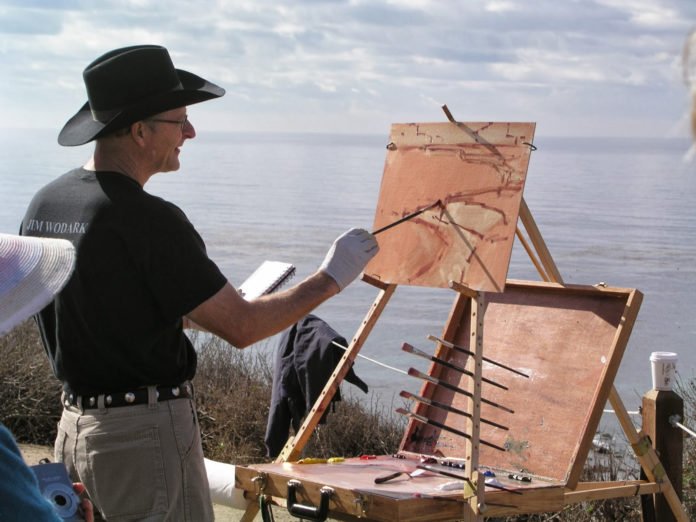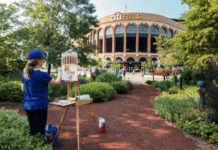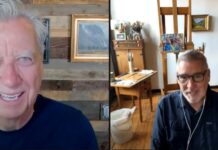How to Paint Landscapes > California artist Jim Wodark redesigns the landscape to create stunning compositions. The star of the video workshop “Composition for Painters,” Wodark has dedicated himself to painting for the past 30 years and counting.
Design Makes All the Difference
BY ROBERT K. CARSTEN
“I paint to bring beauty into the world, to bring beauty to people’s lives, to inspire and be inspired. I want to make a difference through my art,” says Jim Wodark, who made a life-changing switch to art decades ago, after a career working in business. “I had gone to a seminar about realizing breakthroughs in your life and I knew that I’d always wanted to do something with art. Shortly afterward, I quit my job and started a cartooning business because I loved to draw.”
SOUND ADVICE
“Whether studio or plein air painting, I edit a lot when I compose a scene, moving things around and deleting things. Really, the whole process begins with and depends on thumbnail sketches. I need to have a clear idea of what I want to communicate,” says Wodark.
“I ask myself why I want to paint a particular scene, what excites me about it, and why I want to design it a certain way. Having clarity in this initial phase is super important to me. If I don’t know what I’m trying to say, I won’t know where it’s going, and it’ll be difficult to tell when it’s done. The clearer I am with my vision of the painting from the onset — just what it is I want to communicate — the better the painting comes out. It really makes the experience of painting much more enjoyable because I’ll know when I’ve achieved the idea and feeling I was after.
“My advice for a novice artist is to learn to draw well. The ability to render something accurately is so important in representational painting. Even if you use a lot of lost edges and impressionistic brushstrokes, a good drawing is the foundation for a good painting. The advice I would give an intermediate artist is to write a vision statement about why you paint. What are you trying to say? The answers that you come up with will provide you with direction and motivation moving forward. Then I would say to draw more and paint with the intention of taking your work to the next level with every painting. Ultimately, of course, I would advise painting every day.”
Undoubtedly, it’s through what Wodark calls “the tools of painting” — shapes, line, color, edges, value, and impasto — that the artist is able to convey his message with strength, eloquence, and immediacy. Of “Anasazi Trail,” completed during the Zion National Park’s Plein Air Invitational, Wodark says, “It’s a good example of making shapes varied and interesting. There are mostly larger shapes and a few smaller ones. It gives the impression of mass in the foreground; then, as your eye moves to the left, the shapes of the riders and background become smaller. The skewed quality of the forms and their edges create dynamic diagonals, leading your eye throughout the composition. There’s also a pleasing contrast of warm and cool colors, and soft and hard edges. Nothing is underdone or overworked.”
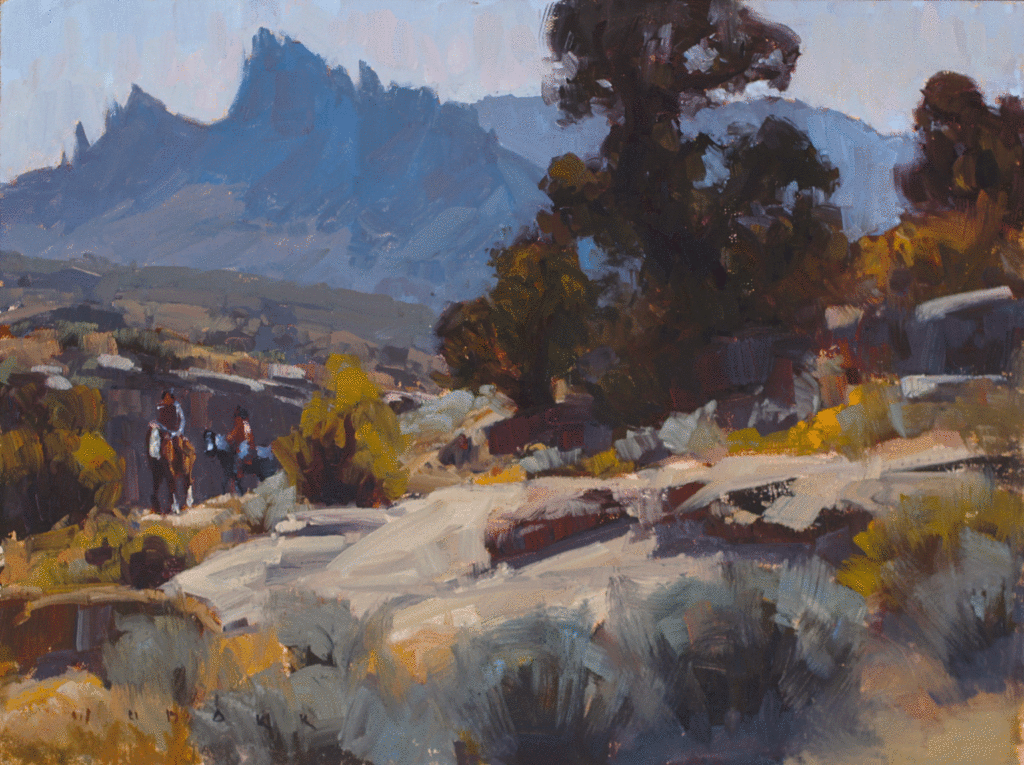
PLEIN AIR VERSUS STUDIO PAINTING
“The thing I love about plein air painting is that you only have two to three hours before the light changes too much; there’s a specific speed required for painting this way that works for me,” says the artist. “If I work too fast, I tend to paint too thickly and can ruin my painting. If I paint too slowly, I tend to put in too much detail and end up doodling and overworking things, thus destroying the spontaneity and immediacy of the response I cherish.
“The great challenge of working in the studio, I think, is to keep the feeling of immediacy and light, which you learn best by plein air painting. Looking at a computer screen certainly is not as inspiring as being there and seeing all the incredible colors that a photo can’t convey. Larger works are more difficult to complete on-site, however, so I use photos, sketches, my imagination, and memory to create successful studio paintings.”
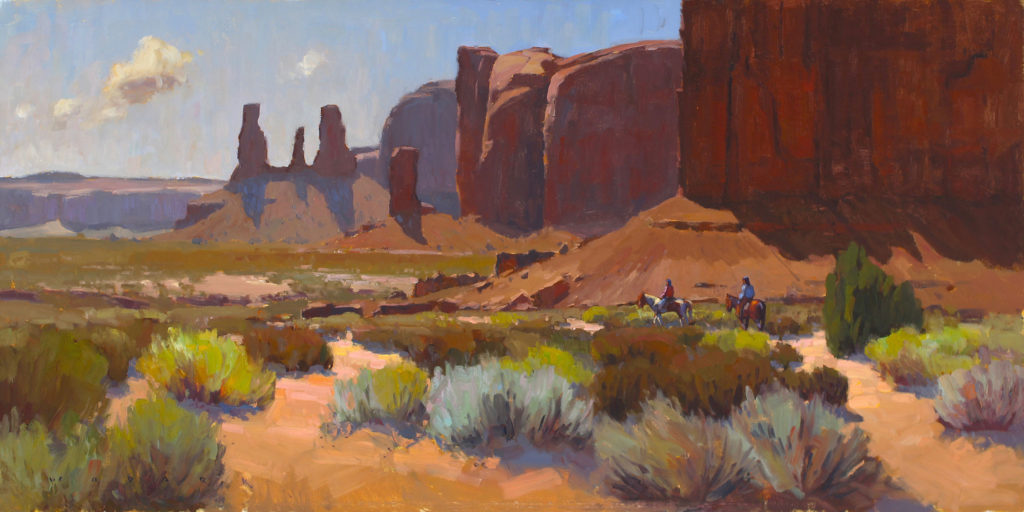
Although he has painted on location at the Navajo Nation’s Monument Valley Park on the Arizona-Utah border many times, Wodark painted Ancient Trail in his studio. “So many landscapes out there lend themselves to long horizontal formats because the sandstone formations are so magnificently spread out,” he says. “The butte on the right actually extends much higher, but trying to get all of it in the composition wasn’t what I was trying to do.
“I liked the idea of designing the painting so that you can tell how grand these formations are just by showing the base of the one on the right. Riders lend a sense of scale, and I used the trail to enter the picture at right. As the eye moves across the painting to the left, it eventually meets the contrast of the sky against what’s called the Three Sisters. I made up some clouds as well, using their soft edges to contrast with the harder edges of the rocks, to lead your eye to the dark formation at the upper right, and finally to circle back to the focal point of the riders.”
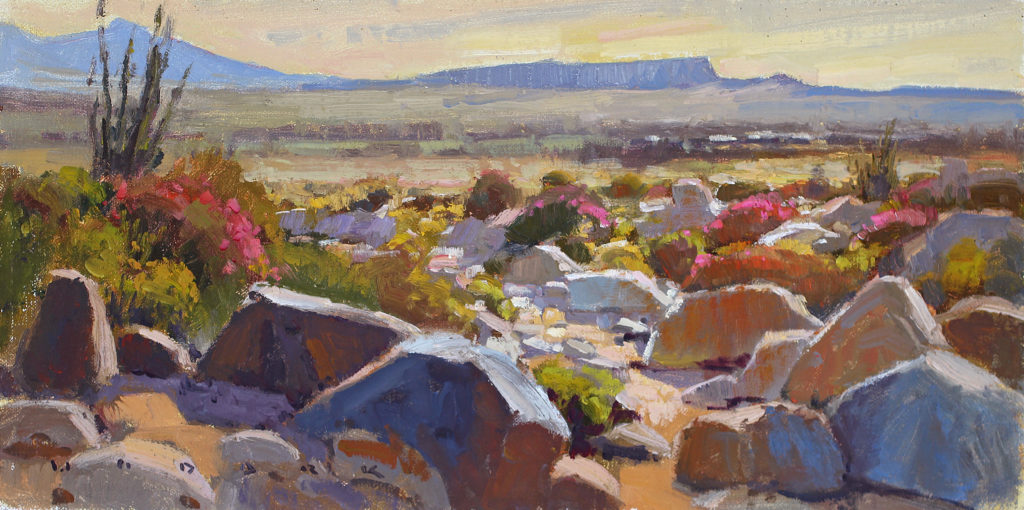
By contrast, the artist painted the smaller “Bouncing Light” during the Anza-Borrego Desert State Park plein air invitational event, where he observed and recorded the effects of the intense Southern California desert light firsthand. The rim lighting on the backlit boulders of the arroyo fascinated the artist, as did the reflected light bouncing onto the facing sides of the rocks from the backs of those in front of them. Desert wildflowers added contrast and beauty to the elongated scene.
HOW TO PAINT LANDSCAPES: USING ARTISTIC LICENSE
During another plein air event, ancient oaks in the Sonoma vineyards caught the artist’s eye. Referring to “Oak Respite,” Wodark notes, “I focused on designing the tree so that all of the shapes would be interesting and different from one another, not repetitive. One thing I’ve noticed is that artists sometimes repeat the same shapes in bushes or the spaces between them, for example, or they try to paint every leaf instead of treating them en masse. Those things can make a painting boring, so I took the liberty of grouping leaves and simplifying them. I also varied the sizes and shapes of positive forms and negative spaces.”
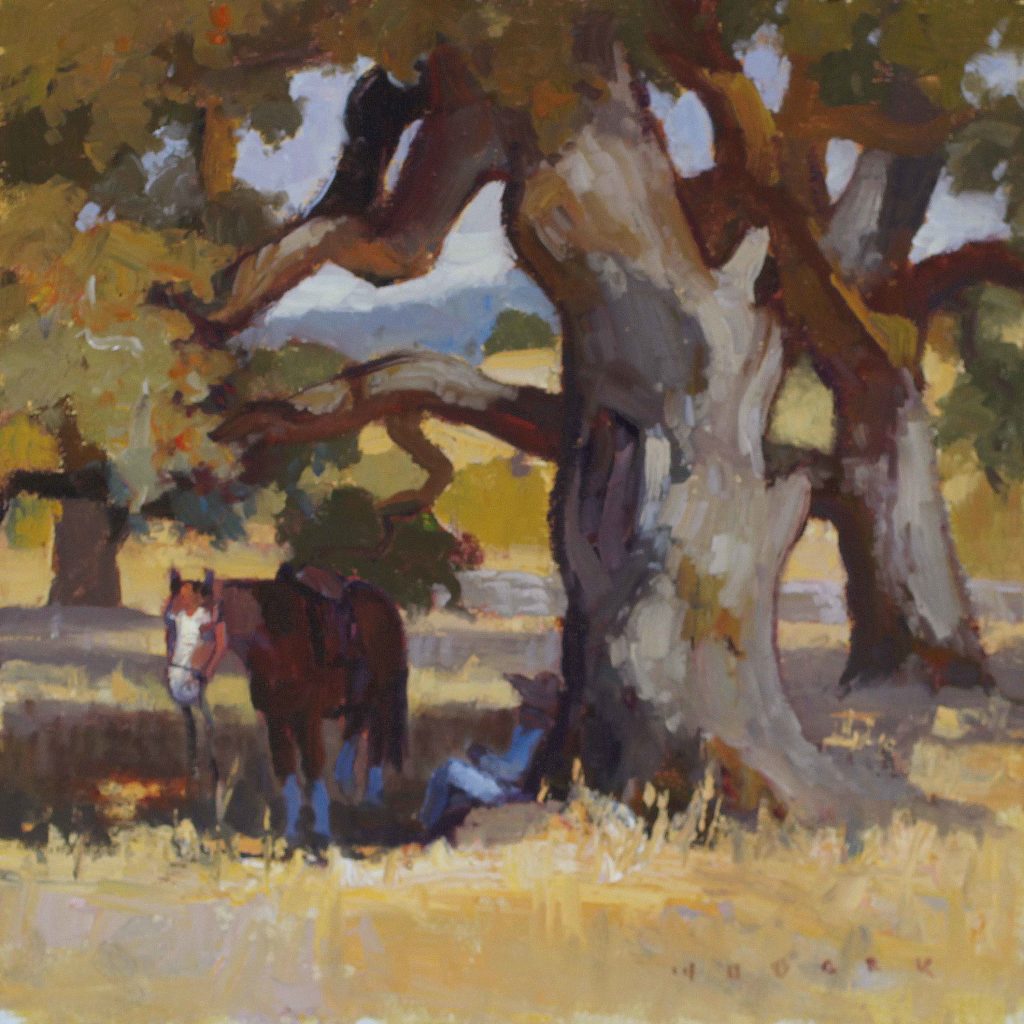
The massing of leaf shapes and the enchanting colors in “The Golden Blanket” superbly reveal the power and clarity of the artist’s voice. Again, Wodark varies the shapes, colors, and sizes of the aspen trunks and branches and the spaces between them. “This is definitely one where I felt adding a rider was essential. To see what I mean, take your hand and block out the figure and horse,” he suggests. “Everything leads you to that spot, so I needed something there to reward your eye. I didn’t put highlights on the rider because I didn’t want you to see him at first, but rather to discover him emerging from the aspen grove.”
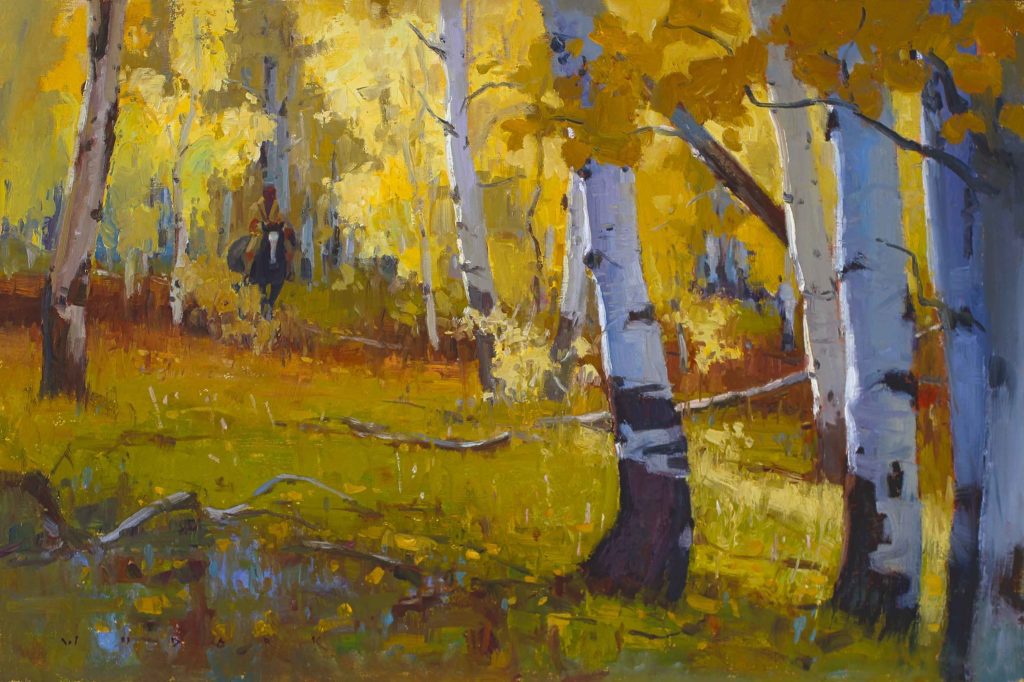
Wodark reflects, “It took me a long time to understand that by altering and adding things in my compositions, I could make stronger, more interesting paintings. I do have a tremendous amount of fun when I paint, and using my artistic license freely has made all the difference!” Indeed, Wodark’s paintings have garnered numerous top awards, and he was the Grand Prize winner in the 2018 PleinAir Salon competition. As the old adage goes: You can’t argue with success.
Browse OutdoorPainter.com for even more articles and advice on how to paint landscapes.
How to Paint Landscapes
Preview “Composition for Painters” (a five-hour workshop) with Jim Wodark here:

